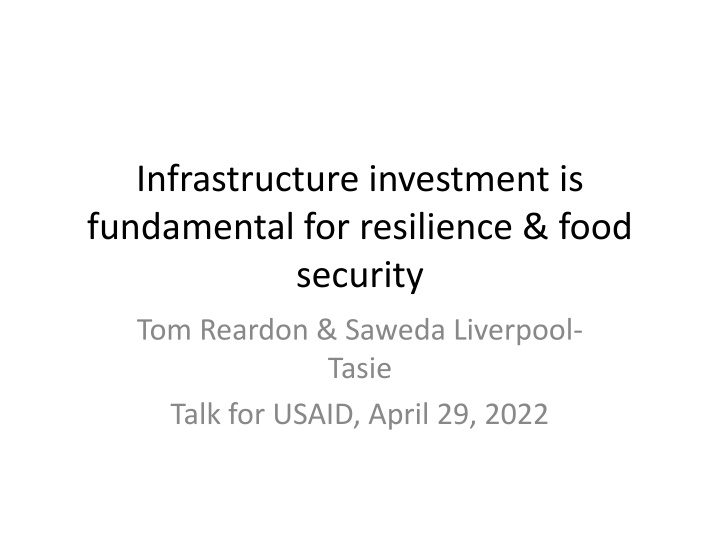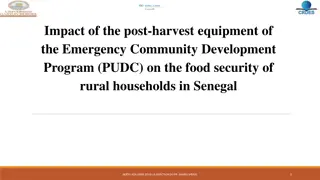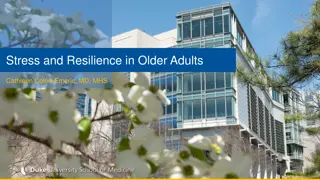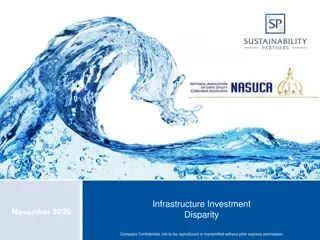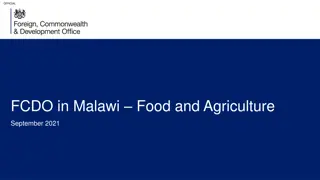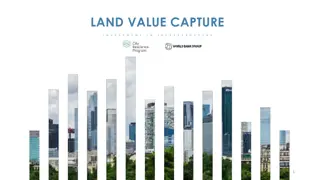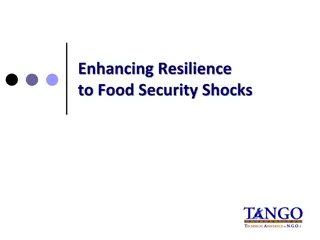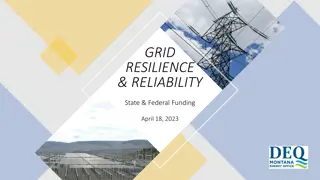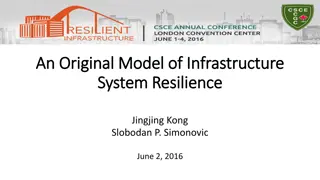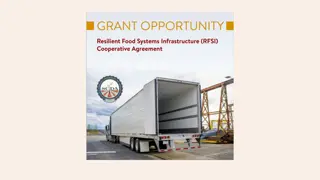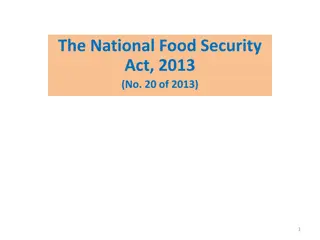Importance of Infrastructure Investment for Food Security and Resilience
Investment in both hard and soft infrastructure is crucial for building resilience and ensuring food security, especially in regions like Africa and South Asia. Various components of the food system, from wholesale markets to logistics services, heavily rely on robust infrastructure to function effectively. The backbone of the food system, along with downstream consumers, midstream SMEs, and farmers, all depend on well-developed infrastructure to thrive and meet the growing demand for food.
Download Presentation

Please find below an Image/Link to download the presentation.
The content on the website is provided AS IS for your information and personal use only. It may not be sold, licensed, or shared on other websites without obtaining consent from the author.If you encounter any issues during the download, it is possible that the publisher has removed the file from their server.
You are allowed to download the files provided on this website for personal or commercial use, subject to the condition that they are used lawfully. All files are the property of their respective owners.
The content on the website is provided AS IS for your information and personal use only. It may not be sold, licensed, or shared on other websites without obtaining consent from the author.
E N D
Presentation Transcript
Infrastructure investment is fundamental for resilience & food security Tom Reardon & Saweda Liverpool- Tasie Talk for USAID, April 29, 2022
1. Infrastructure = bones & blood of food system a) hard infrastructure not specific to FSC (e.g., roads, ports) specific to FSC (e.g., wholesale markets) ... most food in Africa and South Asia comes to consumers via wholesale markets
b) soft infrastructure services & materials delivered by "lateral supply chains" finance), and materials (such as energy) Policies of business enabling environment bribes, multiple-taxation, excessive certifications, uncertain, red tape ESPECIALLY important in intermediate stage of food system development (SMEs); Nigerian entrepreneur example (wholesale, logistics,
2. Downstream consumers depend on blood & bones a) 80% of African and 80-90% of South Asian national food consumption purchased b) Many consumers FSCs depend on "long infrastructure" Nigerian maize consumers: 500-1000km long FSCs Senegalese FV consumers Tanzanian FV consumers
3. Midstream SMEs depend on bones & blood a)60% of FSC "formed" by midstream SMEs b)Depends heavily on logistics "blood" and "bones" 4% of Nigerian urban maize traders own trucks: rest use 3PLS; 500-1000 km trips 80% of traders costs formed by energy costs Road quality (& banditry, conflict) double taxation, bribes condition costs Depend on wholesale markets as base
4. Farmers depend on blood & bones a)Farmers selling to markets (mainly to cities) 13 times more likely intensify" (organic matter, bunds, terraces, fertilizer) b) input costs conditioned by blood & bones 4 million tons of fertilizer per year in Africa delivered by 100's of 1000s of trucks & traders over (mainly private) supply chain to "sustainably
5. Two big hopes current hopes depend for success on fundamentals (blood & bones) a) Big digitalization, e-commerce but debate glosses over need for blood & bones first in place hope now to "leapfrog" with
b) Big hopes for farmers with diversification into high value crops and sustainable intensification & supply chains to be resilient high-value products horticulture: tomatoes in Tanzania, potatoes in Rwanda, aquaculture in Nigeria & Bangladesh basic productivity: maize in Zambia soil conservation: potatoes in Rwanda climate resilience: irrigation for tomatoes in Tanzania & Senegal traders resilience depend on blood & bones to be resilient: our work sustainable intensification lab during COVID: "non-essential essentials" in Nigeria like chicken &
6. Policy recommendations a)Invest heavily & rapidly in roads, bridges, ports, & wholesale markets foremost Bangladesh rural feeder roads & fish wholesale markets China wholesale markets in secondary & tertiary cities b) Invest in policy action for the enabling environment India reduction of double taxation for traders toll roads & highways to reduce banditry/bribery
c) Focus on LEVERAGING existing market nodes: e.g., upgrade (Tanzania need example) Big problems with "stand alone" initiatives not integrated in existing agropole, hubs): Indonesia Dodomo/Tanzania wholesale market outside city Best practice: leveraging, integrated solutions: World Bank cold storage centers into wholesale markets; China used existing markets & upgraded & added facilities (not separate) Best practice: investment that can be adapted (rice water infrastructure in Bangladesh & Myanmar turned by farmers into boom foundation for fish & vegetables) wholesale markets market structure (SEZ, agribusiness terminals;
7. Challenges a)lack of view of urgency: under-emphasis importance of domestic FSC & lateral SCs like 3PLS (Nigeria COVID) (over) emphasis on import reliance (over) emphasis on export market in governments of
b) Fragmentation & ambiguity in policy sphere: Infrastructure entity vs Min of Ag vs Min of Finance Wholesale markets "fall between two stools" (national versus local government (Nigeria); Min of Ag versus Min of Economy (Myanmar) Lack of clarity/knowledge about what policies are (Rusike) Lack of knowledge about how fast things changing (urbanization Nigeria; proliferation Tanzania wholesale market
c) Lure of "white elephants" (SEZs, agropoles) not reinforcing grass root occurring transformation already
